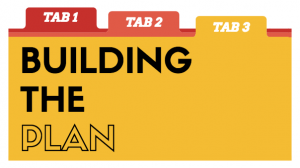How To Make a Trading Plan
How to Make a Trading Plan- Part 2
“Fail to plan and you plan to fail”, this is an old saying in business. It might sound shallow to some, but those people who want to succeed, traders included, should follow these words religiously.
by: Colibri Trader
In this second part of posts for beginners, I will talk about making a trading plan…
Ask any trader who makes money on a regular basis about planning and they will tell you, “Choose between: follow a methodically written plan or fail.”
Already have an investment plan or written trading plan? Great! You have just made your way into the minority. That would not guarantee a success, but you have eradicated a huge hiccup. If your plan is a mixture of faulty techniques and lack of preparation, you will not immediately be successful, but you would certainly have a record of what mistakes you have committed, repeatedly, that has turned out to be costly.
Following are some ideas to help you with the process, whether you already have a plan or not.
Disaster Avoidance 101
If you want to succeed at Trading, you need to make sure that you treat it like a business. Reading a handful of books, establishing a brokerage account, buying a charting program and starting to trade is nowhere close to a business plan. “Not following a written trading plan, will walk you into a court disaster every time you set foot in the market.”
A trading plan is supposed to be the word of divinity; each time the market closes you have to re-evaluate your plan according to the fluctuations in the market. Another factor related to trading plans is being original and using your own understanding, rather than copying someone else’s trading plan. This not only destroys the person’s own ability to exceed, but it may also contradicts a person’s own trading styles and objectives.
 Building the Master Plan
Building the Master Plan
Following are the 10 essentials components for a good trading plan:
Skill Assessment
Start by evaluating yourself, that is the first and the foremost thing you need to consider. Apart from that, do you have confidence in your system? Have you verified that results of your system? Can you follow your signals confidently?
Professional traders are always looking for the traders who lack a plan and will possibly make a mistake. That is one of the major sources of building profit for them.
Mental Preparation
Trading in a market is like stepping into a battlefield, you need to be emotionally and psychologically prepared before entering the market, otherwise, you are stepping into a war zone without a sword in your hand. Make sure you have a good feeling about trading, you had a good night’s sleep and that you are up for a challenge.
Having a positive attitude towards trading is extremely crucial. If you are angry, preoccupied or hung-over then you are at a bigger risk of losing. Make sure you are completely relaxed before you step into the market, even if you have to take yoga classes for that.
Set Risk Level
Risking between 1% to 5% of your portfolio on a single trade is the best way to go. Even if you lose while betting on that amount you will be capable enough to trade some other day and make up for your loses.
The amount of risk a trader can take is the amount he thinks he will be able to get the next day. It is a wise option of start with a smaller amount and slowly and gradually increase the percentage.
Set Goals
Setting a realistic profit target and risk to reward ratio, before entering a trade is what every successful trader would do. Many successful traders will not invest into a trade if the reward is 3 times greater than the risk. Set weekly, monthly and annual profit goals and re-evaluate them on a regular basis.
Do Your Homework
Trading depends on several aspects, which include the situation in the markets around the word, the status of overseas markets, the status of index futures such as Nasdaq 100 exchange-traded funds. Considering index futures is a wise option for evaluating the market condition.
Make a to-do list and build a habit of researching the market before thinking of trading. This will not only keep you from taking unnecessary risks, but it will also minimize your chances of losing money.
Trade Preparation
Make sure that you close any unnecessary programs on your computer and reboot your computer before the day begins, this refreshes the cache and resident memory (RAM). Several trading systems allow you to set up the environment according to your needs, set it up in a way that allows for minimal distractions and help you keep an eye on each in and out, alongside.
Keep in mind that a flow in the trading system can be costly.
Set Exit Rules
Normally, traders put 90% of their efforts in looking for buy signals, but they never pay attention to when to exit. At times, it is difficult to close trade if you it is ending up in a loss for the trader, but it is wiser to get over it.
Professional traders lose a lot of trades each day, but they manage their money and limit loses, which ends up in making profits for them.
Prior to entering a trade, you should be aware of your exits. There are at least two for every trade. First, what is your stop loss if the trade goes against you? It must be written down. Mental stops don’t count. Second, set a profit target. Once you reach there, sell a portion of your percentage and you can move your stop loss on the rest of your position to break even if you wish. As discussed above, never risk more than a set percentage of your portfolio on any trade.
Set Entry Rules
Computer systems are more effective for the purpose of trading because they don’t have feeling about the things that go into the trading environment and they are neither emotionally attached to the factors that are in one way or the other related to trading. Moreover, computers are capable of doing more at a time as compared to mechanical traders. This is one of the several reasons that 50% of all trades that occur on the New York Stock Exchange are computer-program generated.
A typical entry rule could be put in word like this: “If signal A fires and there is a minimum target at least three times as great as my stop loss and we are at support, then buy X contracts or shares here.”
Keep Excellent Records
Keeping records is a key to being successful at trading. If you win a trade, you should note down the efforts and the things that pulled you towards the trade and if you lose a trade, you should know keep a record of why that happened in order to avoid making mistakes in the future.
Note down details such as targets, the exit and entry of each trade, the time, support and resistance levels, daily opening range, market open and close for the day and record comments about why you made the trade and lessons learned.
Also, you should save your trading records so that you can go back and analyse the profit or loss for a particular system, draw-downs (which are amounts lost per trade using a trading system), average time per trade (in order to calculate trade efficiency) and other important factors. Remember, this is a business and you are the accountant.
Perform a Post-Mortem
After each day at the market, take a moment and to realize the why and what. Calculating profit and loss comes afterwards. Write down anything that you learnt from the day and make sure you write them in a way so that you can relate to them later on.
 The Bottom Line
The Bottom Line
Successful paper trading does not ensure that you will have success when you start trading real money and emotions come into play, but successful paper trading does give the trader confidence that the system they are going to use actually works. Deciding on a system is less important than gaining enough skill so that you are able to make trades without second guessing or doubting the decision.
There is no way to guarantee that a trade will give you profit. This is the actual beauty of trading and based on a trader’s skill and system of winning and losing. Keep in mind that there is not winning without losing. Professional traders know the odds are in their favour before entering a trade. It is a continuous process of making more profits and cutting down loses which might not ensure a win a battle, but it ensures success in the war. Traders or investors who don’t believe in this are more viable to making loses.
Traders who win consistently treat trading as a business. While it’s not a guarantee that you will make money, having a plan is crucial if you want to become consistently successful and survive in the trading game.









been reading this article over and over again, it applies not only in trading, but also for living life
thanks colibri!
was there a part One
Not to this one. Do you have any questions?
Title saya part two. Does it begin here or is actually a part one?
Thanks for your content, very insightful!
Where does it say part 2? There is only that part 🙂 Let me know if I can help with anything and thanks for the great words!
I had the same question.. under the coffee and book image, the article title is:
How to Make a Trading Plan- Part 2
I love this content on this site.. great reads!
Hi Nick, you are absolutely spot on! I must have missed this one. I will write a second article on that at some point. Apparently there is a lot of interest on that subject. Let me know if you are interested in knowing something else 🙂